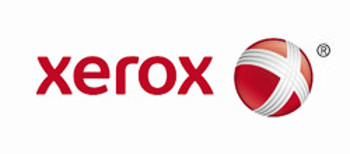This Week In Business
Print’s not dead. How Hearst is using social to power-up its papers.
Analizo launches Europe's first algorithm-as-a-service, bringing robo-investing capabilities to the wealth management industry
Applegreen wins prestigious European SME Award
Mimaki Tx300P-1800 already proving a Fashionable Choice
Irish Stock Market
Applegreen wins prestigious European SME Award
Star of 2016 award won by Applegreen Applegreen, the #1 motorway service area operator in…Irish Stock Exchange Quarterly Statistics Q3 2016
Q3 2016 statistics show over 35,000 securities listed on Irish Stock Exchange markets…ISE shows growth
Irish Stock Exchange listing figures grow to over 35,000 securities Quarterly statistics…Irish Stock exchange extends to 28 companies
Dalata Hotel Group joins the ISE’s Main Securities Market Dalata Hotel Group (Dalata),…#IPOready companies graduate from ISE leadership programme
High-potential companies have graduated from #IPOready #IPOready is the Irish Stock…Quarterly Statistics - Irish Stock Exchange
Q1 2016 statistics show 34,382 securities listed on ISE markets. Main headlines: Listings…ISE The Place To Be!
Irish Stock Exchange wins No.1 slot in Great Place to Work Awards. Would you like a great…Venn Life Sciences Joins The ESM
Adding a euro quotation for investors. Venn Life Sciences, the growing Contract Research…
World Economy
Print’s not dead. How Hearst is using social to power-up its papers.
The Newspaper business is dead? Don’t tell that to Hearst. By Brett Lofgren | September…Press Release From ISE
ISE and NASDAQ OMX announce intention to bring Dual ISE/US Market Access to Irish…Sappi First-Quarter Profit Falls
Company says result is due to paper and pulp price decline. Sappi Ltd., the world’s…How global manufacturing is changing.
Ireland is changing and the savvy business has to be aware of changing global trends.3D…High Consumption Foodstuffs in DRC:
High Consumption Foodstuffs in DRC: Where Are the Surpluses and Deficits? By Dr…Xerox wins print contract for UK Government
Xerox to deliver cost efficiencies in print services to UK public sector The UK Cabinet…Disposable income drops
New figures just released show that household disposable income in Ireland fell by 0.4…Ireland’s richest 300 worth €62bn
The 300 richest people in Ireland are now worth more than €62bn. The figure is staggering…
Business & Finance
Applegreen wins prestigious European SME Award
Irish Stock Exchange Quarterly Statistics Q3 2016
ISE shows growth
Irish Stock exchange extends to 28 companies
#IPOready companies graduate from ISE leadership programme
Quarterly Statistics - Irish Stock Exchange
World Stock Market
Hans‐Ole Jochumsen re‐elected as FESE President
Euro rates fixed – but for how long?
GLOBAL STOCKS and COMMODITIES
Snapshot of Irish shares and European stocks over Christmas
Markets surge on Central Banks' intervention
U.S. Stocks Update Wednesday 23rd November 2011
Economy, Tenders & Invenstment
Prior information notice of tender.
Tender Opportunity Here at DPNlive, we are always looking for business opportunities for…Print tenders
Want to do the printing for the Houses of the Oireachtas? Below is a table of three…
- Details
- Written by Administrator
- Parent Category: Business and Finance
- Category: World Economic Updates
Xerox to deliver cost efficiencies in print services to UK public sector
The UK Cabinet Office’s Government Procurement Service (GPS), has selected Xerox UK as a supplier for Managed Print and eCommunications Services. Xerox is also included in GPS’ new Wider Public Sector Print Service Framework agreement.
 The contract, which has an estimated value of £6.5 million this year, will run for three years and is designed to deliver cost efficiencies in print services to public sector departments which include local government, the education sector, the NHS and the police force.
The contract, which has an estimated value of £6.5 million this year, will run for three years and is designed to deliver cost efficiencies in print services to public sector departments which include local government, the education sector, the NHS and the police force.
Xerox will work with the departments to rationalise and improve communication channels in tandem with the GPS’ goal to deliver additional cost savings of 19 per cent across the wider public sector.
Julie Hesselgrove, group president for communication and marketing services Xerox Europe said:
“Being chosen as an official supplier for the Government Procurement Service once again is testament to Xerox’s long commitment to supporting the provision of improved services to the public sector. This agreement demonstrates how Xerox can help significantly reduce costs while improving efficiencies for the GPS.”
Working for the UK government and public sector for 35 years, the company says it has helped departments simplify their document supply chains, remove duplicate business processes and achieve savings in cost and time. Since 2007, their work for the Department for Work and Pensions (DWP) has resulted in a 21 per cent reduction in costs and 66 per cent reduction in wasted print.
Xerox signed a Memorandum of Understanding with the Cabinet Office to deliver savings to the UK Government as part of the Efficiency Reform Group’s deficit-reduction programme in 2010. This March, as part of an estimated £150 million two-year multi-supplier framework agreement, the UK Government named Xerox as sole supplier for a limited range of multi-function devices and one of four suppliers of managed print services and a wider range of multi-function devices.
Xerox already provides technology, document management and business process outsourcing to a wide range of public sector organisations such as the Department of Work and Pensions, Worcester NHS Trust, Manchester City Council, Newport City Council, Sandwell Council, Scottish Police Services Authority, Kirklees Council and UCLH.
Copyright © 2012, DPNLIVE – All Rights Reserved
- Details
- Written by Administrator
- Parent Category: Business and Finance
- Category: World Economic Updates
 New figures just released show that household disposable income in Ireland fell by 0.4 per cent last year or nearly €350 million.
New figures just released show that household disposable income in Ireland fell by 0.4 per cent last year or nearly €350 million.
On top of that consumption spending dropped by a significant 1.2 per cent or €945 million.
The CSO (Central Statistics Office) preliminary estimate for the average combined gross income of all households was just under €90 billion.
Government investment last year was just €5.3 billion with a whopping €5.8 billion capital transfer for bank recapitalisation. Taken together this resulted in a net borrowing requirement for the Irish government at the end of 2011 of nearly €21 billion.
However there was a small ray of sunlight. The governments saving deficit which stood at €13 billion in 2010 improved to €10.6 billion at the end of 2011.
Copyright © 2012, DPNLIVE – All Rights Reserved
- Details
- Written by Administrator
- Parent Category: Business and Finance
- Category: World Economic Updates
 The 300 richest people in Ireland are now worth more than €62bn. The figure is staggering because it’s almost 70 per cent of the IMF/EU bailout given to this country. To put it in context, it also represents more than the combined value of the Luxembourg and Lithuanian economies.
The 300 richest people in Ireland are now worth more than €62bn. The figure is staggering because it’s almost 70 per cent of the IMF/EU bailout given to this country. To put it in context, it also represents more than the combined value of the Luxembourg and Lithuanian economies.
So the rich have got richer.
Last year the Sunday Independent rich List estimated the wealth of the top 300 at close to €57bn. This year they are nearly €5bn better off! And the reason is down to a spectacular recovery by the stock markets over the last four months. Although the euro debt crisis saw stock markets crash last summer wiping billions off the net worth of the super rich, this astonishing rebound has restored their fortunes and clearly made some of them even wealthier.
Forbes magazine recently reported there were five billionaires in Ireland. Forbes is wrong. It appears we have more than 11 billionaires here, the same as last year although with some face changes.
Animal healthcare tycoon Pearse Lyons has joined the billionaire ranks, based on new financial information about his Alltech company. His wealth is estimated at €1.5bn.
So who is Ireland’s richest man? He is Pallonji Mistry, a low profile Indian who became an Irish citizen in 2003. Mistry owns 18.2 per cent of the Indian Tata group which had interests ranging from chemicals and steel to hotels and offices. It also owns Jaguar cars. Current estimates put his worth at €7.4bn. This would make him the 96th richest man on the planet, according to Forbes.
But the last 12 months of turmoil in the domestic economy and on world markets has also changed the landscape for some former tycoons.
Just five years ago, Sean Quinn’s wealth was pegged at around €4.55bn. Fast forward to January 2012 and he was declared bankrupt.
Another casualty was property developer Ray Grehan who was bankrupt in December with his companies owing debts of €650m.
The property crash in Ireland has been the real culprit for affecting many people’s wealth. With prices for commercial property, the bedrock of most millionaire portfolios, down by 65 per cent, calculating the net worth of certain individuals in this year’s rich list has been extremely difficult. Since it is now impossible to value the wealth of people with land portfolios, the likes of Tougher Oil’s Tom Tougher, kitchen company boss Eamonn O’Rourke and Northern Ireland developer Gerry O’Hare have been omitted due to uncertainty over the value of their properties.
The main sectors decimated in the economic crash were property, retail, the motor industry and civil engineering.
But as in all walks of life where there is a loser there is also a winner.
2012 sees 44 new entrants to the super rich list. People like insurance company chief Dominic Silvester, who owns a large slice of rugby club Saracens, and UK hedge fund boss Colm O’Shea.
The real winner this year has been in technology with major IT company buyouts making fortunes for the likes of John Hearne and Ronan Roche. They sold their Curam Software for €120m. The Turley brothers also hit the jackpot selling most of Cartrawler.com, their €100m valued online car rental business.
Contrary to expectations in a downturn Paddy Power continued to defy the pundits with an extraordinary share price rise which in itself has also seen huge wealth creation. In six years the share price has quadrupled in value. So although the likes of David Power, John Corcoran and Stewart Kenny are a long time on the list, don’t be surprised if a few more Paddy Power executives make it there by next year such is the share price rise. Another company, Paul Coulson’s glass bottle firm Ardagh, is surging ahead which undoubtedly will make paper fortunes for key insiders.
The rich list never stays the same. About 89 names have fallen off since the first Sunday Independent rich list in 2010. But 89 new names have now replaced them.
Copyright © 2012, DPNLIVE – All Rights Reserved
- Details
- Written by Administrator
- Parent Category: Business and Finance
- Category: World Economic Updates
 central banIrish banks really do not know the level of mortgage arrears on their books yet but soon they will have to. Pressure is piling on them from the Central Bank and the troika to get to grips with this issue in order to get an accurate picture of impaired loans and the additional capital requirements they will need in time for the next stress tests due in the third quarter of this year.
central banIrish banks really do not know the level of mortgage arrears on their books yet but soon they will have to. Pressure is piling on them from the Central Bank and the troika to get to grips with this issue in order to get an accurate picture of impaired loans and the additional capital requirements they will need in time for the next stress tests due in the third quarter of this year.
A key factor is the unemployment rate which, although stable at 14.2 per cent, is a major reason for missed payments. Mortgage arrears are continuing to increase as highlighted by Irish Life & Permanent’s recent announcement of new impairments and that’s a month before its 2011 results are due. Out of the blue it said that next month’s annual results would show it had set aside €1.4 billion, up from €420 million which it set aside for mortgage arrears at the end of 2010. Arrears at IL&P have virtually doubled from 6.8 per cent to 11.5 per cent.
A year ago the Central Bank told banks to start setting aside higher capital for increased mortgage arrears. At present the average percentage of owner-occupiers at least 90 days behind on payments is a staggering 9.2 per cent and rising.
But what is really hurting banks apart from tracker mortgages and unemployment figures is the continued fall in house prices which was 17.4 per cent last year. A continuation of this fall affects the recovery value of the assets backing these mortgages.
Under the proposed Central Bank and troika policy the banks have to now set aside additional capital to cover current and expected losses.
This means that in the next round of PCAR stress tests (Prudential Capital Assessment Review) there is more likely to be a requirement for additional capital injections into this sector.
State-owned AIB will show the true picture when its results are published at the end of this month. Many observers believe all the indications point to high levels of arrears there.
Conversely, while the state-backed banks are well capitalised now, all over the 10.5 per cent required, the Central Bank continues to believe strongly that mortgage arrears will continue to rise during 2012 and that house prices will also continue their downward slide.
Given this scenario, impairment will widen which is why the Central Bank wants banks to get into a stronger position for recalculating their stress capital position.
But will the banks face up to the obvious? This time it appears they have no choice because the Commission and Central Bank are demanding a conservative approach to new lending and a stronger collateral valuation position.
Finally, draft legislation for the proposed Personal Insolvency Bill goes before the Dail (parliament) next month. It includes mortgage debt among other unsecured loans. This in itself should allow the banks to see how much debt they may have to write down on unsustainable morgages, ie loans that customers simply will not be able to pay back.
At present all the indications are that come May the rate of mortgage arrears will be 10 per cent.
Copyright © 2011, DPNLIVE – All Rights Reserved
- Details
- Written by Administrator
- Parent Category: Business and Finance
- Category: World Economic Updates
 The European Financial Stability Facility (EFSF), the main bailout fund that finances Ireland’s spending, managed to raise €1.5bn in the money markets this week despite a ratings downgrade.
The European Financial Stability Facility (EFSF), the main bailout fund that finances Ireland’s spending, managed to raise €1.5bn in the money markets this week despite a ratings downgrade.
The EFSF borrowed the amount in six-month IOUs or ‘bills’ (very short-term bonds) at an auction managed by German officials.
The fund paid an interest rate of just 0.2664 per cent despite ratings agency Standard & Poor’s downgrading its long-term credit rating from AAA to AA+.
An EFSF spokesperson said the €1.5bn raised was part of an emergency fund to cope with any sudden request for financing from countries such as Ireland or Portugal, its only current borrowers. It added that it could also be used if another European country needed cash for its banking sector.
Should Ireland draw down any of the newly raised cash, the Government here will have to pay just 0.1 per cent extra in interest.
But sources here say Ireland would look to borrow for much longer than six months forcing the EFSF back to the markets to replace its six-month borrowings with long-term bonds to match the Government’s needs.
The EFSF was never supposed to borrow over such short terms. The decision to do so was made after a bond deal was cancelled at short notice back in November when money markets shut down to almost all borrowers.
This November crisis left bailout officials extremely concerned about the need to have cash available for Ireland and Portugal at all times. Since then, the EFSF has used short-term bills to ensure this.
The deal was seen as a success in the markets where investors bid to buy three times more of the bonds than were actually sold.
But the EFSF’s future itself is in doubt anyway as it is due to be replaced by a more permanent arrangement in July. Some officials have argued that the EFSF should be kept running alongside the new rescue fund at least until 2014.
This would result in two large bailout funds being available which in theory could circumvent the €500bn limit that Germany insists it’s prepared to see committed to rescuing the euro.
Copyright © 2011, DPNLIVE – All Rights Reserved
Artisan Ireland
The Sweetest Thing
The Sweetest Thing. By Tom Byrne.Scratch the surface of Irish industry and you will find…Donegal’s Liquid Gold – Pure Rapeseed Oil
Donegal’s Liquid Gold – Pure Rapeseed Oil The healthy cooking oil favoured by Celebrity…A simply rural life at Waterfall Farm
by Hannah Bolger People are keen to connect with where their food is coming from…Tastefully Yours
Artisan producers of a delightful range of handmade chutneys, preserves, and…MILEEVEN Bees--Sarah's Honey
Mileeven Fine Foods was established in 1988 by my mum, Eilis Gough from her hobby of…Glebe Brethan Farmhouse Cheese
by David Tiernan In 1987 we won supplier of the Year Award from Drogheda and Dundalk…Graham Roberts - Connemara Smokehouse
My name is Graham Roberts and I live and work in a small fishing village, Aillebrack near…CIARA’S PANTRY: It's a Family Affair
By Ellen Neumann13th April 2012 Ciara O’Dowd grew up in the hospitality industry. Her…
















